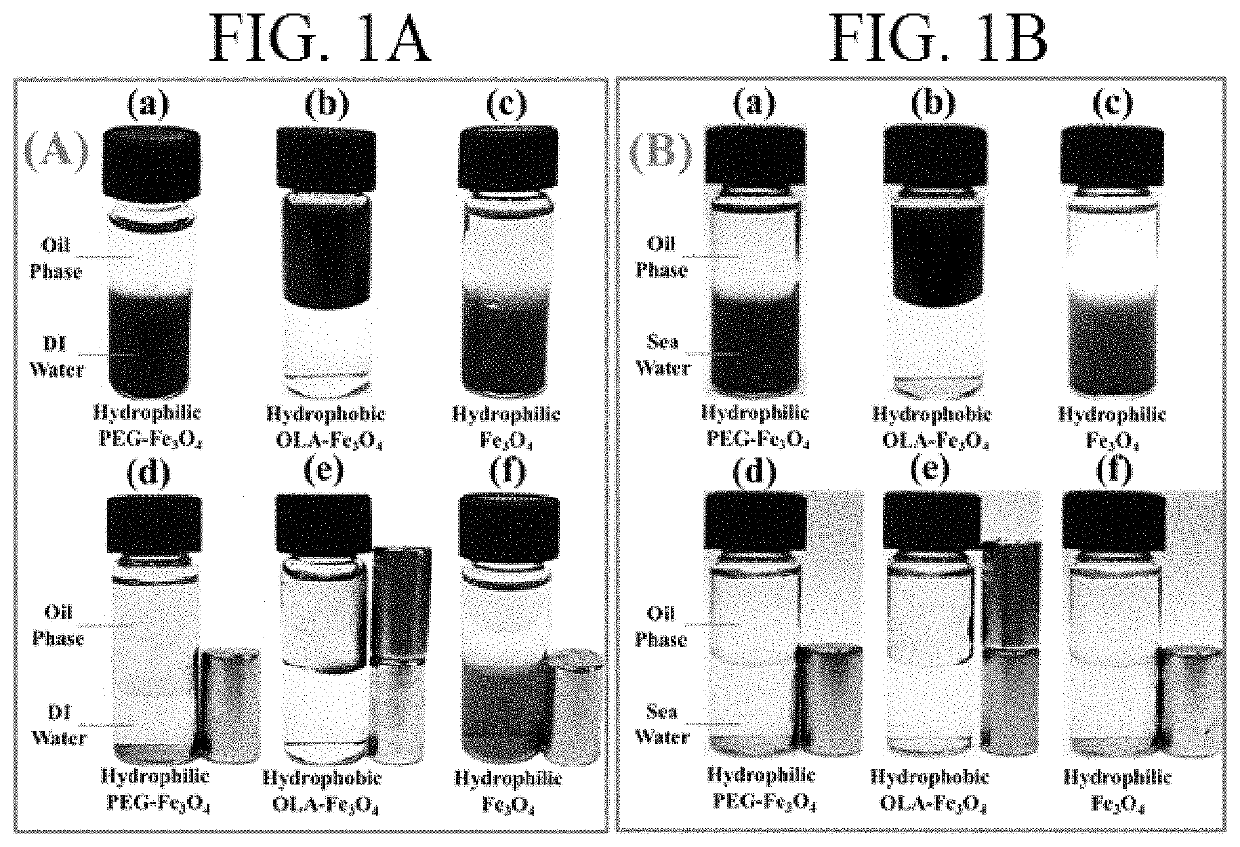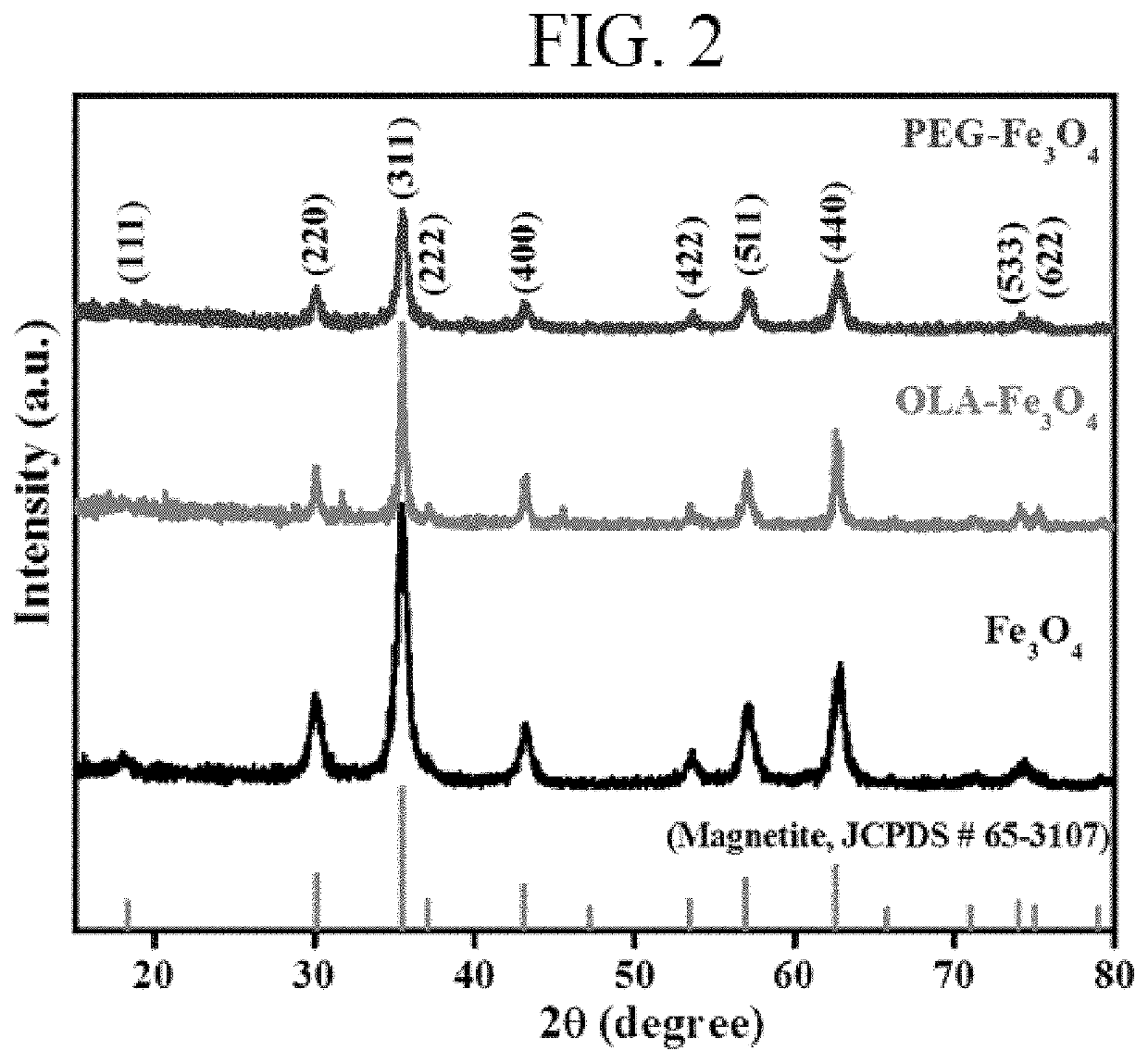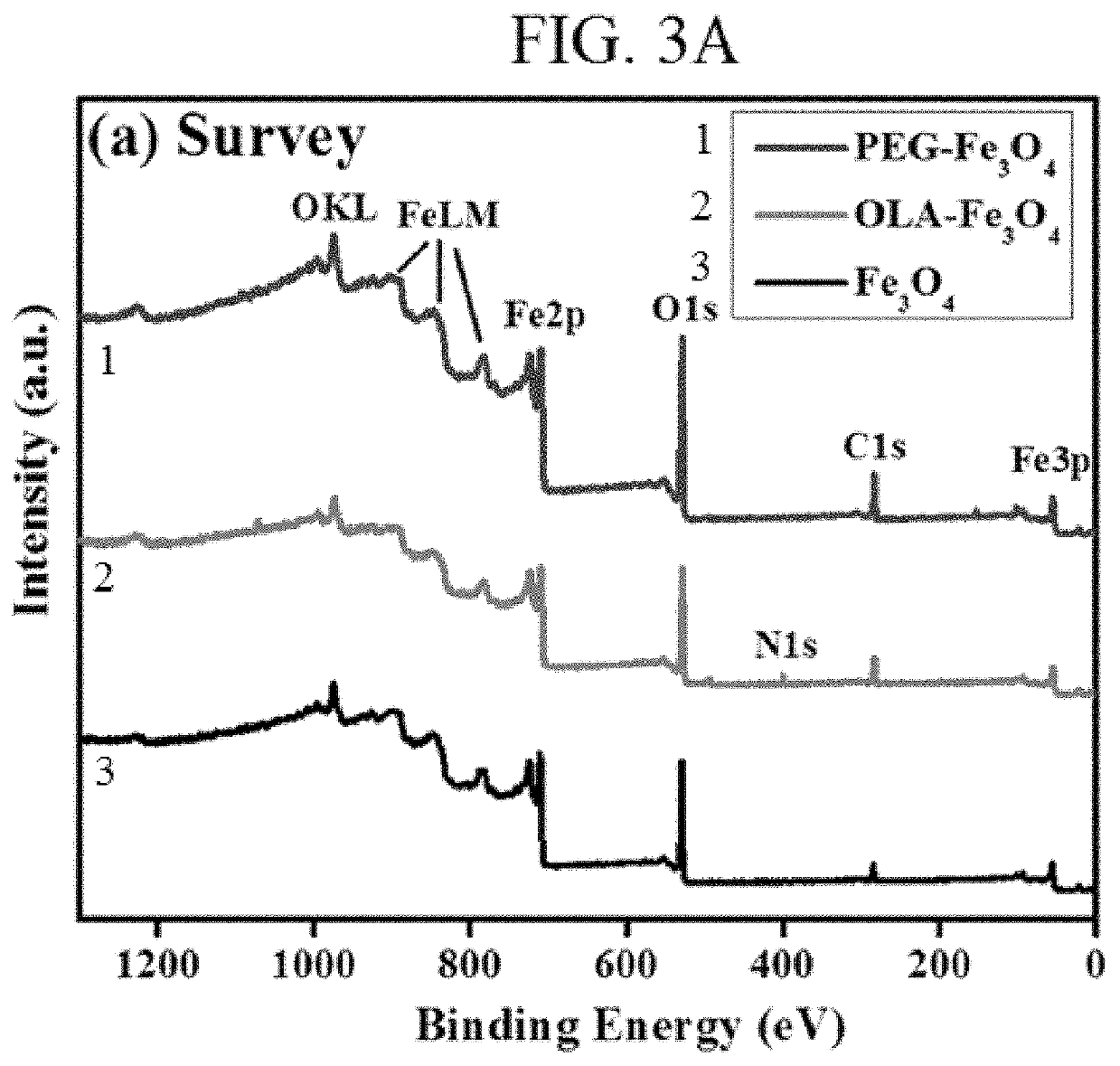Hydrophilic and hydrophobic superparamagnetic fe3o4 nanoparticles as t2-contrast agents for oil reservoir applications
a superparamagnetic fe3o4 nanoparticle and oil reservoir technology, applied in the fields of nanochemistry, material science, and petroleum science, can solve the problems of difficult surface treatment of stable and dispersed spions with ultra-small size, complicated synthetic process, etc., and achieve the effect of improving the t1 contrast properties
- Summary
- Abstract
- Description
- Claims
- Application Information
AI Technical Summary
Benefits of technology
Problems solved by technology
Method used
Image
Examples
examples
[0098]The following examples illustrate various aspects of the present invention. They are not to be construed to limit the claims in any manner whatsoever.
[0099]As described in more detail below, the surfaces of SPIONs were functionalized by bonding polyethylene glycol (PEG-400) or oleylamine (OLA) on their surfaces to respectively provide hydrophilic and hydrophobic properties to incorporate into aqueous (e.g., water, seawater, brine) or oil (e.g., crude oil) materials in a geological reservoir. Uncoated SPIONs were also prepared by coprecipitation method using NH4OH as a reducing agent for comparison. Stability of hydrophilic SPIONs was monitored in deionized (DI) water and / or artificial seawater (ASW), while stability of hydrophobic SPIONs was investigated in model oil (cyclohexane-hexadecane 1:1).
[0100]X-ray diffraction (XRD) and X-ray photoelectron spectroscopy (XPS) profiles confirmed the magnetite (Fe3O4) phase of synthesized nanoparticles (NPs). The presence of C—O (532.4 e...
PUM
 Login to View More
Login to View More Abstract
Description
Claims
Application Information
 Login to View More
Login to View More - R&D
- Intellectual Property
- Life Sciences
- Materials
- Tech Scout
- Unparalleled Data Quality
- Higher Quality Content
- 60% Fewer Hallucinations
Browse by: Latest US Patents, China's latest patents, Technical Efficacy Thesaurus, Application Domain, Technology Topic, Popular Technical Reports.
© 2025 PatSnap. All rights reserved.Legal|Privacy policy|Modern Slavery Act Transparency Statement|Sitemap|About US| Contact US: help@patsnap.com



